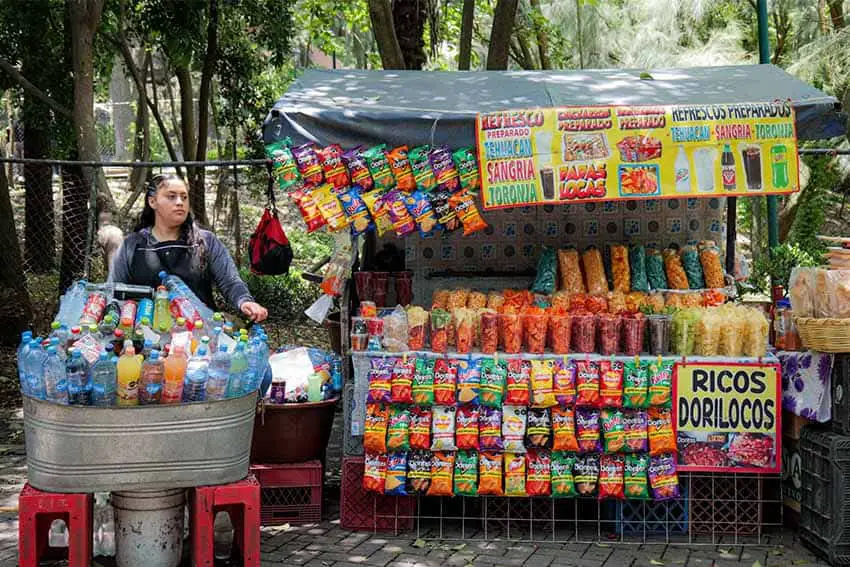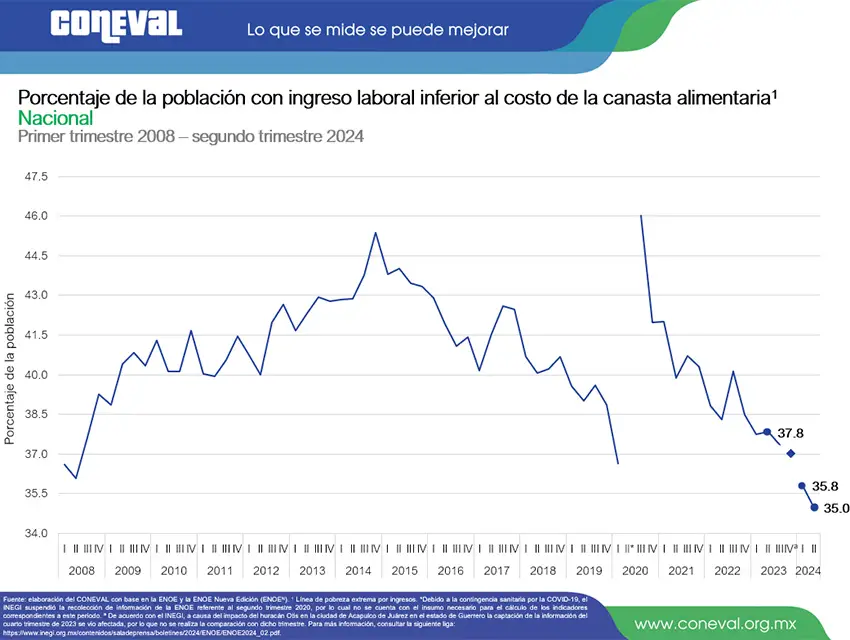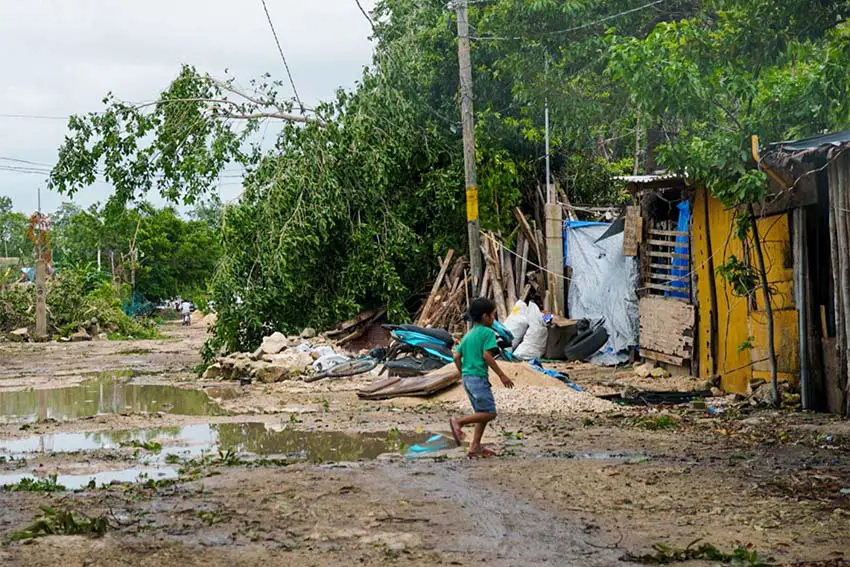Mexico’s percentage of working poor declines to historic low

The percentage of Mexicans classed as “the working poor” has declined to the lowest level on record, falling almost six points during the term of the current government.
In the second quarter of 2024, the monthly income of 35% of the working-age population was insufficient to purchase a basic food basket for each member of a worker’s family, according to labor poverty data published Tuesday by the National Council for the Evaluation of Social Development Policy (Coneval).

The percentage has declined 5.7 points since President Andrés Manuel López Obrador took office in December 2018.
Between the second quarter of last year and the second quarter of 2024, the percentage fell 2.8 points to reach its lowest level since comparable records began in 2008.
The López Obrador administration has provided ample monetary support to Mexico’s most disadvantaged people through welfare and employment programs.
Its financial assistance, and significant increases to the minimum wage, have helped lift millions of Mexicans out of poverty. However, poverty spiked during the COVID pandemic, rising to a record high 46% of the working-age population in 2020’s third quarter.
Average earnings increase over 8%
The average “real work income” of people in jobs was 7,441 pesos (US $373) per month in the second quarter of 2024.
The average income for men was 8,138 pesos (US $408), while the average for women was 6,450 pesos (US $323). Men earned 8.1% more on average than a year earlier, while women’s salaries rose 8.7%.
The average salary in the formal sector (10,514 pesos per month) was more than double the average in Mexico’s vast informal sector (5,119 pesos).
Coneval also reported that the average “real work income per capita” increased 8.9% annually to reach 3,351 pesos (US $168) per month in the second quarter of 2024.
The number of people in employment increased by 805,200 between the second quarters of 2023 and 2024.


The urban/rural divide
Just over 30% of the working-age population in urban areas is part of “the working poor” while almost half of those who live in rural parts of Mexico fit into that category.
Between the second quarters of 2023 and 2024, the percentage of “working poor” urban residents declined three points to 30.9%. The percentage of “working poor” rural residents decreased 2.6 points to 47.6%.
Poverty declined in majority of Mexico’s states
The percentage of the population classed as “the working poor” fell in 27 of Mexico’s 32 federal entities between the first and second quarters of 2024.
Durango (-4.3 points), Querétaro (-2.8 points) and Yucatán (-2.8 points) recorded the biggest quarter-over-quarter declines.
Among the five states where labor poverty rose, Guanajuato (+2.9 points), Tabasco (+2.7 points) and San Luis Potosí (+1.7 points) recorded the biggest increases.
The percentage of “working poor” people also increased in Colima and Jalisco.
Unemployment ticks up in July
The national statistics agency INEGI reported Tuesday that Mexico’s unemployment rate was 2.9% in July, up from 2.8% in June.


On an annual basis, unemployment declined 0.2 percentage points.
INEGI said that 1.8 million people out of an economically active population of 62.1 million were unemployed in July.
An additional 4.9 million people — 8.1% of those in jobs — were underemployed in July, INEGI said.
Tabasco had the highest unemployment rate in the country in July (4.5%), while Oaxaca had the lowest (0.6%).
More than half of Mexico’s workers — 54.5% — were employed in the informal sector in July, according to INEGI. That figure declined 1.2 points compared to the same month of 2023.
With reports from El Universal, El Economista, Reforma and Aristegui Noticias
Source: Mexico News Daily

